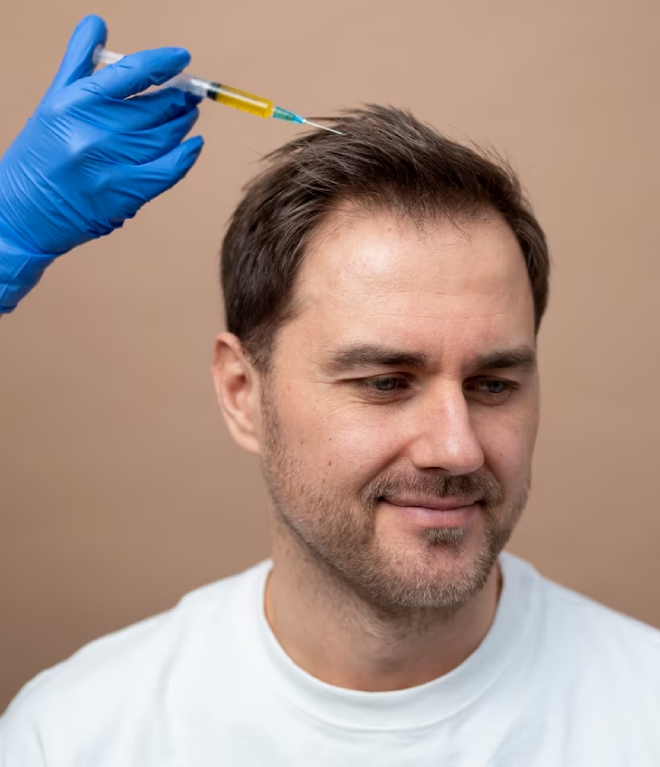Sapphire Percutaneous Method Hair Transplant
The Sapphire Percutaneous Method (also known as the Sapphire FUE Method or the Sapphire Percutaneous Technique) is a type of hair transplant procedure that uses a special type of blade made of sapphire to create tiny incisions in the scalp for hair graft placement. The blade is designed to be extremely sharp and precise, allowing for more accurate and consistent incisions.
The Sapphire Percutaneous Method is a form of Follicular Unit Extraction (FUE), which involves the extraction of individual hair follicles from the donor area (usually the back or sides of the scalp) and transplanting them into the recipient area (where hair loss has occurred).
Compared to traditional FUE methods that use steel blades, the sapphire blade used in the Sapphire Percutaneous Method is said to have several advantages, including:
Smaller incisions: The sapphire blade is thinner than traditional steel blades, which allows for smaller and more precise incisions. This can result in less trauma to the scalp and faster healing times.
Reduced scarring: Because the incisions are smaller and more precise, there is less risk of scarring or visible marks on the scalp.
Increased graft survival: The sapphire blade is said to be gentler on the hair follicles, which can result in a higher survival rate for the transplanted grafts.
Like other FUE methods, the Sapphire Percutaneous Method requires careful planning and precision to achieve optimal results. The procedure is typically done under local anesthesia and can take several hours to complete, depending on the extent of the hair loss and the number of grafts required.
How to take care of your head after the Sapphire Percutaneous method?
Proper post-operative care is essential for a successful hair transplant surgery, including the Sapphire Percutaneous Method. Here are some general guidelines on how to take care of your head after the procedure:
Avoid strenuous physical activity: It's important to avoid any strenuous physical activity that may increase blood flow to the scalp for at least the first week after surgery. This includes exercise, heavy lifting, and bending over.
Be gentle when washing your hair: You will need to be gentle when washing your hair to avoid dislodging the grafts. Your surgeon will provide you with instructions on how to wash your hair properly and what products to use.
Avoid touching the transplanted area: You should avoid touching or scratching the transplanted area as much as possible to avoid dislodging the grafts or introducing bacteria into the wounds.
Sleep in a particular position: You may need to sleep in a particular position (usually with your head elevated) for the first few days after surgery to avoid putting pressure on the transplant area.
Avoid smoking and drinking alcohol: Smoking and drinking alcohol can increase the risk of complications and slow down the healing process. You should avoid smoking and drinking alcohol for at least two weeks after surgery.
Follow your surgeon's instructions for medication: Your surgeon may prescribe medication to help manage pain and reduce the risk of infection. It's important to take these medications as directed.
Attend follow-up appointments: You will need to attend follow-up appointments with your surgeon to monitor your healing progress and ensure that the grafts are taking properly.
Following these guidelines can help ensure a smooth recovery and improve the chances of a successful hair transplant surgery. If you have any questions or concerns about your post-operative care, be sure to contact your surgeon for guidance.
How is the healing process after the Sapphire Percutaneous method?
The healing process after a Sapphire Percutaneous Method (Percutaneous Method) hair transplant is similar to other types of hair transplant procedures. However, the use of smaller incisions with the Sapphire blade can result in a faster and smoother healing process. Here is a general timeline for what to expect:
First few days: You may experience some swelling, redness, and tenderness in the transplanted area. Your surgeon will provide you with medication and instructions on how to manage these symptoms.
First week: You will need to be gentle when washing your hair and avoid touching the transplanted area as much as possible. You may also need to sleep in a particular position to avoid putting pressure on the transplant area.
2 to 3 weeks: The transplanted hairs may fall out, which is a normal part of the healing process. You may also experience some itching and scabbing around the transplanted area.
1 to 3 months: New hair growth should begin to appear in the transplanted area, though the hair may be thin and wispy at first.
6 months to 1 year: The transplanted hairs should have fully grown in and thickened up. You should be able to see the final results of the procedure at this point.
It's important to follow your surgeon's instructions for post-operative care to ensure proper healing and minimize the risk of infection or other complications. If you have any concerns about the healing process or experience any unusual symptoms, be sure to contact your surgeon right away.









